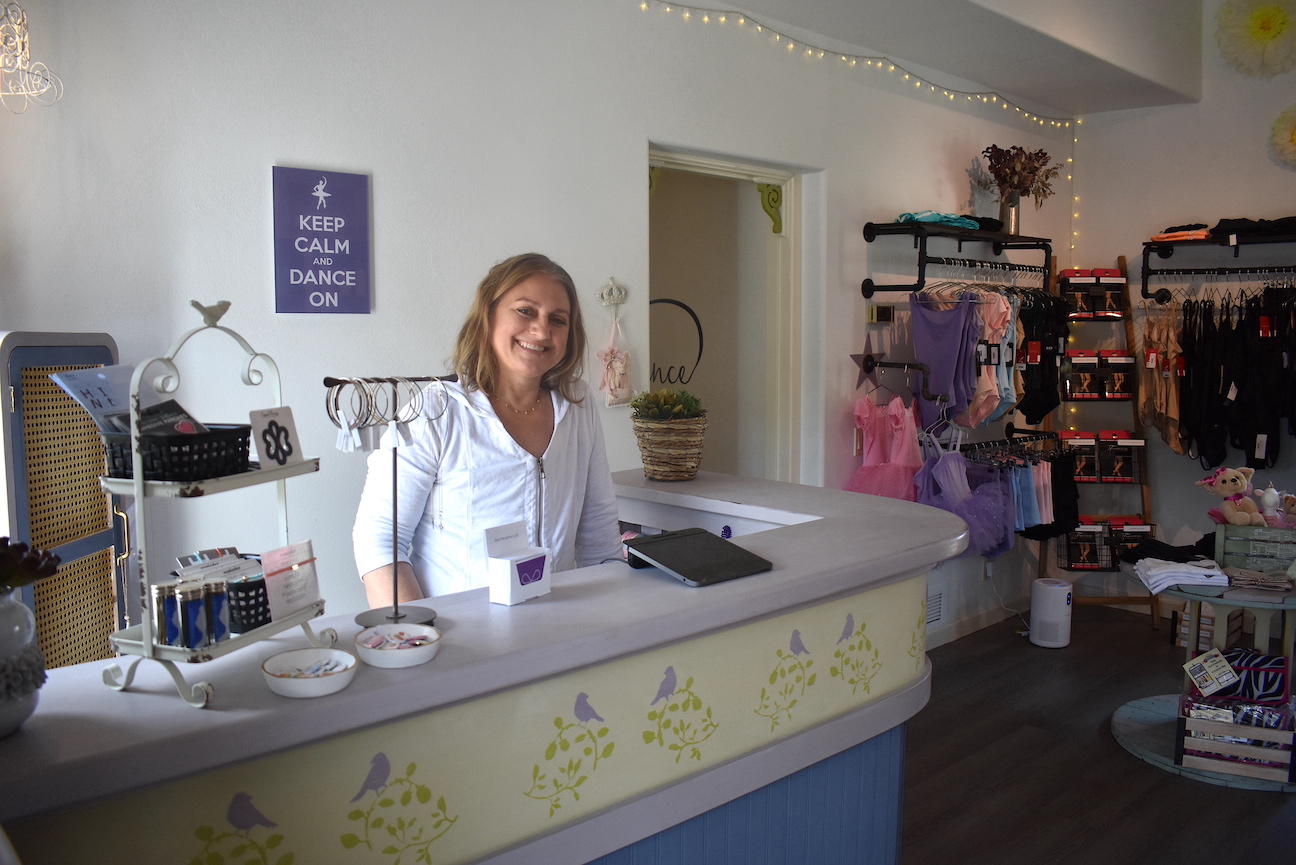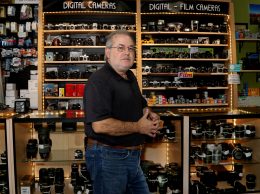For small businesses, pandemic offers lessons in preparing for the next disaster
IN THIS ARTICLE
- Latest news Topic
- pacbiztimes Author
By pacbiztimes Wednesday, May 11th, 2022

Joie Krintzman, the owner of Twist Dance Apparel in Santa Barbara, opened her 550-square-foot dance apparel boutique in October 2021, amid the pandemic.
The mother of two daughters, both of them dancers, had never owned her own business before, but she saw the need for a dance shop in Santa Barbara. Krintzman’s focus is her online presence, offering curbside pickup and preparing for possible disruptions that could affect business operations. With a digital business, Twist could keep operating if California imposed any new rules to prevent the spread of COVID-19, Krintzman said. In that sense, her online store is a hedge against a future pandemic, a worsening of this one, or any other disaster that might keep people away from her storefront.
“It’s another aspect of the business that’s super important, especially for people who aren’t comfortable shopping,” Krintzman said. “It seems like most people are life as usual at this point, but we will be prepared if there’s another surge.”
As the tri-county region emerges from the pandemic, business owners are taking steps to better prepare for major business disturbances such as natural disasters and pandemics. Michelle Martinich, the executive vice president and CFO at American Riviera Bank, said every disaster is different, and effects different sectors of the economy in different ways.
“Things keep happening and things keep changing,” she said. “The unexpected just might happen.”
To help better withstand a significant business disruption, Martinich said businesses should take time to review their insurance policies regarding business interruption. Some insurance coverage will help cover rent and lost income. Personally, Martinich said she has had it cover cleanup from wildfire ashes.
“For businesses, specifically ask about, ‘What do I have in case of access loss to my facility?’” Martinich said. “Don’t forget it when you have it.”
The pandemic has been a prime example of the value of preparedness and quick action. In San Luis Obispo, the toy store Whiz Kids adapted to the pandemic with a new e-commerce platform.
Owner Lesa Smith, who founded Whiz Kids in 1987, went to the Cal Poly Center for Innovation and Entrepreneurship Small Business Development Center to get help improving her store’s website. Advisors there helped her build a new Shopify e-commerce service from scratch. It took about six months to get enough product on the website to “make it interesting,” Smith said.
Two years after launching the site, Whiz Kids offers thousands of products online and ships across the country.
“The website is a second business,” Smith said.
Lessons learned from the pandemic and its related downturns include diversification of revenue, said Judy Mahan, the director of the Cal Poly San Luis Obispo Small Business Development Center and incubator director of the Cal Poly Center for Innovation and Entrepreneurship.
Many businesses adopted new technologies not embraced pre-pandemic, and it “kind of forced a very accelerated adoption of these technologies, which in the long run, paid off for many of them,” Mahan said.
Disasters are highly unpredictable, but threats that could impact business operations loom in earthquake-prone and wildfire-prone California, said Peter Marcus, the president and CEO of Goodwill Industries of Ventura and Santa Barbara counties.
Goodwill operations shut down for two months early in the pandemic, in 2020. However, operation costs, rent payments and many other costs continued “with no revenue coming in,” Marcus said.
“If we weren’t fiscally responsible and in a great financial position from years before, it would have been very difficult,” Marcus said.
“Disasters and now pandemics, those have happened sporadically over time in history. You always have to be over-prepared on the financial position side,” he said.
Carrie Palmquist, a treasury management consultant at Wells Fargo Bank, helps clients analyze and develop strategic plans for managing their accounts payable and accounts receivable processes. Her work covers Los Angeles County to San Luis Obispo County and she has a large portfolio of technology clients.
Regarding the future of payable transactions, Palmquist said she sees more clients getting rid of paper checks and embracing an electronic format.
“We saw how important this was in March 2020,” Palmquist said. “I had several clients call me and they were concerned they could not get into their office to issue checks, so we had to set up electronic payments very quickly.”
Checks are uesful, she said, but businesses “should have another form of payment that’s more electronic, so that you can send it from anywhere.”
Jake Ganajian, a Wells Fargo market executive for commercial banking, said he’s had many conversations with business owners during the pandemic that reflect “a refreshed mindset.”
“Some businesses are taking advantage of thinking through merger and acquisition activity,” he said.
“A lot of folks were looking forward to coming out of the pandemic with smooth seas ahead, but there certainly are different risks they’re factoring in,” Ganajian said, such as supply chain disruptions, inflation and labor shortages.
Some business owners are anxious to move forward because the last couple of years forced them to constantly react to external events, Ganajian said.
“A lot of people are trying to shift to being proactive, but are trying to think through what the current economic environment is presenting to them right now,” he said.
Businesses on the Central Coast are more likely than before the pandemic to put money away for future emergencies, said Joanne Funari, the executive vice president and chief operating officer at American Riviera Bank.
“They’re understanding you need to save for a rainy day,” she said. “Whereas before, some businesses just kept spending if they had the money.”
Related Articles
Opinion: The pandemic changed how people work, and they’re not going back
 Friday, July 8th, 2022
Friday, July 8th, 2022










